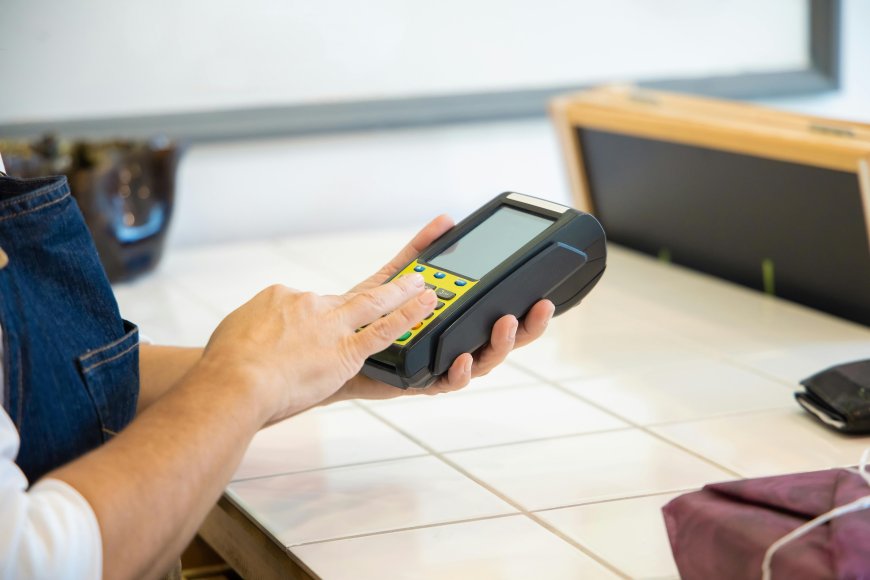Real-Time Reporting and Forecasting: How POS Systems Help Convenience Store Owners Plan for the Future

In today’s fast-paced retail environment, staying ahead of the curve is essential for business success. For convenience store owners in the UK, this means having access to accurate, real-time data that can drive strategic decision-making. With the evolution of technology, POS systems in the UK have become more than just tools for processing transactions—they are powerful systems that offer real-time reporting and forecasting features. These functionalities enable convenience store owners to optimize operations, streamline inventory management, and make data-driven decisions for long-term success.
The Evolution of POS Systems in the UK
The retail landscape has transformed significantly in recent years, with advancements in EPOS systems in the UK (Electronic Point of Sale systems) making them integral to modern-day convenience stores. These systems have evolved beyond basic cash registers to incorporate features that give store owners deep insights into their business operations.
A retail POS system in the UK now enables store owners to track sales, monitor stock levels, manage employee performance, and even analyze customer preferences in real-time. These capabilities have shifted the way convenience stores operate, allowing owners to take control of every aspect of their store’s functionality.
Real-Time Reporting: Empowering Data-Driven Decisions
Real-time reporting is one of the most significant advantages of modern POS systems in the UK. Instead of relying on outdated spreadsheets or time-consuming manual data collection, convenience store owners can access up-to-the-minute reports on sales, customer trends, and inventory levels. Here’s how real-time reporting can be a game-changer:
-
Instant Sales Tracking: Owners can monitor which products are selling well and which aren’t performing as expected. This information is crucial for adjusting inventory orders and optimizing stock levels, ensuring that popular items are always available.
-
Employee Performance Monitoring: Real-time data allows store owners to track individual employee performance, identifying top performers and those needing additional training. This can lead to improved customer service and more efficient store operations.
-
Customer Behavior Insights: Detailed reports on customer purchasing patterns allow store owners to tailor their product offerings based on preferences, improving customer satisfaction and loyalty.
By leveraging these reports, store owners can make informed, data-driven decisions that contribute to operational efficiency and increased profitability.
Forecasting: Preparing for the Future
Forecasting is another key feature of modern EPOS systems in the UK, offering convenience store owners a predictive view of future trends. Forecasting tools help businesses plan ahead, ensuring that they are prepared for changes in demand, seasonal variations, and other factors that could affect sales. Here’s how forecasting benefits convenience store owners:
-
Inventory Management: With predictive data, store owners can anticipate when stock levels will need to be replenished, reducing the risk of overstocking or running out of popular items. This is especially important for perishable goods, where accurate forecasting can minimize waste.
-
Seasonal Trends: Predictive analytics from a retail POS system in the UK allow convenience store owners to prepare for busy periods, such as holidays, school breaks, or local events. By understanding when customer demand will spike, they can ensure they have adequate stock and staff to handle increased foot traffic.
-
Cash Flow Projections: Accurate sales forecasts allow owners to predict cash flow, helping them manage their budget more effectively. This can be critical for small businesses looking to optimize their expenses and ensure they have sufficient funds during quieter periods.
-
Market Trends Analysis: Analyzing past sales data and market trends can help store owners forecast potential changes in consumer behavior, such as the growing popularity of healthier snacks or the shift toward eco-friendly packaging. This allows them to stay ahead of trends and cater to evolving customer preferences.
Enhancing Operational Efficiency
In addition to reporting and forecasting, modern POS systems in the UK help convenience store owners enhance operational efficiency in several ways. Automating routine tasks, such as stock reordering, price adjustments, and employee scheduling, saves time and reduces the likelihood of human error. This allows owners to focus on more strategic aspects of their business.
Moreover, integrated payment processing and real-time synchronization across multiple devices ensure a seamless transaction experience for both staff and customers. With advanced security features, store owners can also mitigate the risk of fraud and ensure customer data is protected.
Conclusion
In today’s competitive retail environment, convenience store owners must be proactive in leveraging technology to stay ahead. POS systems in the UK offer real-time reporting and forecasting capabilities that can transform the way store owners manage their operations. By providing instant insights into sales, inventory, and customer behavior, these systems empower owners to make data-driven decisions that improve efficiency and profitability. Furthermore, the ability to predict future trends ensures that convenience stores are well-prepared for whatever challenges or opportunities the future may hold.
For UK-based convenience stores looking to streamline operations and plan for the future, investing in a modern retail POS system is no longer optional—it’s a strategic necessity.












